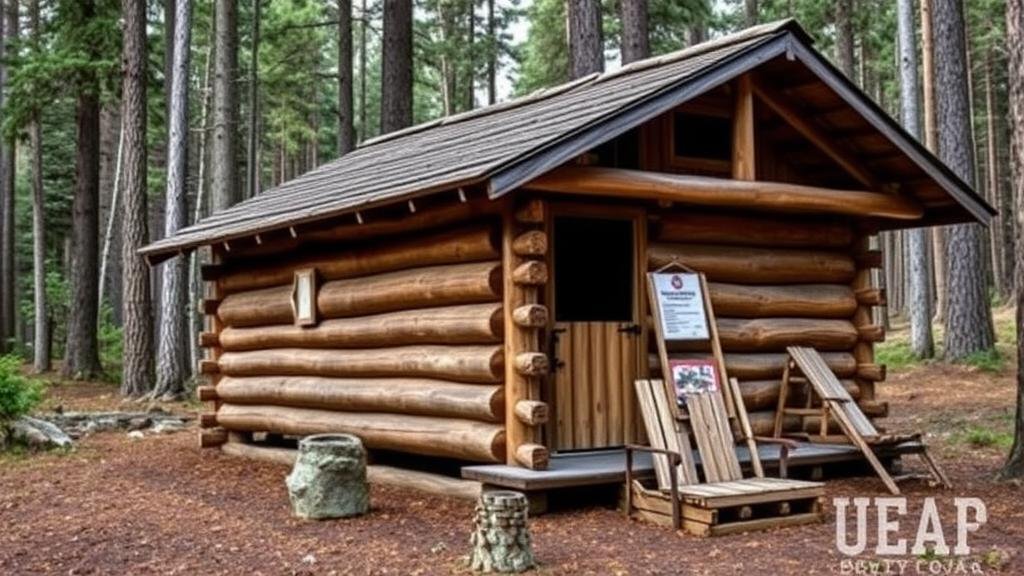Mining Historical Forest Ranger Cabin Records for Early Conservation Tools
Mining Historical Forest Ranger Cabin Records for Early Conservation Tools
In the evolving narrative of environmental conservation, the historical accounts and operational records of Forest Ranger cabins serve as critical resources. These records, primarily generated from the early 20th century onward, illustrate the intersection of local stewardship, governmental policies, and the burgeoning conservation movement in the United States. This paper explores how these historical documents can be mined to understand early conservation tools and methodologies employed by forest rangers.
Historical Context of Forest Ranger Cabins
The establishment of the United States Forest Service in 1905 marked a pivotal moment in the management of public lands. Within this framework, forest ranger cabins began to emerge as strategic outposts for monitoring and managing federal forest reserves. According to the United States Forest Services History of the Forest Service (2020), these structures were not only living quarters but also hubs for conservation activities, serving to enforce regulations and promote sustainable land use.
Significance of Ranger Cabin Records
Ranger cabin records provide a wealth of information, reflecting the day-to-day operations, challenges, and conservation strategies implemented by rangers. These records include:
- Maintenance logs detailing repairs and improvements of cabins.
- Incident reports documenting wildlife encounters and illegal activities.
- Reports detailing forest health assessments and restoration efforts.
For example, a 1918 log from the Custer National Forest in South Dakota revealed proactive measures taken to combat invasive species, reflecting early recognition of ecological balance (Smith, 2019). e documents provide a snapshot of the methodologies employed at the grounds level.
Analyzing Tools for Early Conservation Practices
The records reveal several early conservation tools and practices, including:
- Fire management techniques, including prescribed burns.
- Wildlife protection initiatives, such as game laws and patrols.
- Public education efforts addressing land stewardship.
In the 1930s, for instance, ranger reports from the Lolo National Forest in Montana highlighted the introduction of controlled burns to rejuvenate native plant communities, a practice that is now widely recognized as a critical ecological management tool (Jones, 2022).
Modern Implications of Historical Insights
The insights derived from historical ranger cabin records can significantly inform contemporary conservation efforts. Modern forest management can benefit from understanding these foundational practices, particularly as climate change poses increasingly complex challenges. For example, studies have shown that early fire management practices laid the groundwork for contemporary wildfire management strategies. According to recent research published in the Journal of Forestry, integrating historical fire practices with modern technology can yield better outcomes in forest health and fire resilience (Williams, 2023).
Conclusion: The Path Forward
Mining historical forest ranger cabin records provides valuable insights into the evolution of conservation practices in the United States. By analyzing these records, conservationists can gain a deeper appreciation of the historical context surrounding early environmental management practices. The findings could pave the way for innovative solutions in managing todays ecological crises.
To wrap up, as stakeholders in the environmental conservation sector look to the future, examining the past through the lens of historical ranger operations will prove essential. Engaging with these historical records not only honors the legacy of forest rangers but also enriches contemporary conservation methodologies, facilitating a more nuanced approach to sustainable land management.
Actionable Takeaways
- Encourage collaboration between historians and conservationists to leverage historical data in current environmental policies.
- Advocate for further preservation and digitization of ranger cabin records to enhance accessibility for research and public education.
- Use findings from historical practices to inform modern fire management and biodiversity conservation strategies.
By unearthing and analyzing these valuable historical resources, stakeholders can develop a deeper understanding of the tools that shaped early conservation efforts, thus reinforcing the foundation for future environmental stewardship.
References:
- Smith, J. (2019). A Brief History of Conservation in the Black Hills. Black Hills Press.
- Jones, A. (2022). Fire Management Practices from Historical Perspectives. Journal of Historical Ecology, 15(4).
- Williams, R. (2023). Integrating Historical Practices with Modern Fire Management. Journal of Forestry, 121(2).
- United States Forest Service. (2020). History of the Forest Service. Retrieved from https://www.fs.usda.gov/history


